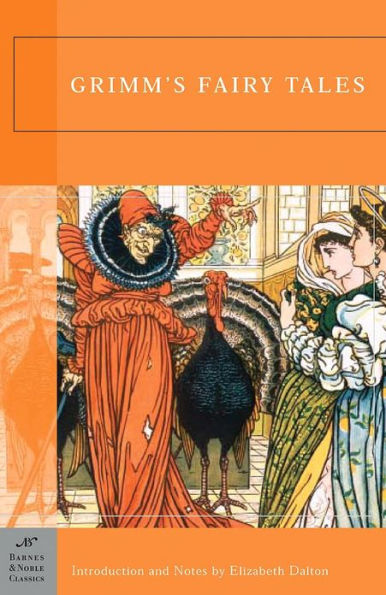&&LDIV&&R&&LDIV&&R&&LDIV&&R&&LI&&RGrimms Fairy Tales&&L/I&&R, by &&LSTRONG&&RWilhelm and Jacob Grimm&&L/B&&R&&L/B&&R, is part of the &&LI&&RBarnes & Noble Classics&&L/I&&R&&LI&&R &&L/I&&Rseries, which offers quality editions at affordable prices to the student and the general reader, including new scholarship, thoughtful design, and pages of carefully crafted extras. Here are some of the remarkable features of &&LI&&RBarnes & Noble Classics&&L/I&&R: &&LDIV&&R
1108825515
- New introductions commissioned from todays top writers and scholars
- Biographies of the authors
- Chronologies of contemporary historical, biographical, and cultural events
- Footnotes and endnotes
- Selective discussions of imitations, parodies, poems, books, plays, paintings, operas, statuary, and films inspired by the work
- Comments by other famous authors
- Study questions to challenge the readers viewpoints and expectations
- Bibliographies for further reading
- Indices & Glossaries, when appropriate
Grimm's Fairy Tales (Barnes & Noble Classics Series)
&&LDIV&&R&&LDIV&&R&&LDIV&&R&&LI&&RGrimms Fairy Tales&&L/I&&R, by &&LSTRONG&&RWilhelm and Jacob Grimm&&L/B&&R&&L/B&&R, is part of the &&LI&&RBarnes & Noble Classics&&L/I&&R&&LI&&R &&L/I&&Rseries, which offers quality editions at affordable prices to the student and the general reader, including new scholarship, thoughtful design, and pages of carefully crafted extras. Here are some of the remarkable features of &&LI&&RBarnes & Noble Classics&&L/I&&R: &&LDIV&&R
- New introductions commissioned from todays top writers and scholars
- Biographies of the authors
- Chronologies of contemporary historical, biographical, and cultural events
- Footnotes and endnotes
- Selective discussions of imitations, parodies, poems, books, plays, paintings, operas, statuary, and films inspired by the work
- Comments by other famous authors
- Study questions to challenge the readers viewpoints and expectations
- Bibliographies for further reading
- Indices & Glossaries, when appropriate
2.99
In Stock
5
1

Grimm's Fairy Tales (Barnes & Noble Classics Series)
560
Grimm's Fairy Tales (Barnes & Noble Classics Series)
560eBook
$2.99
$3.99
Save 25%
Current price is $2.99, Original price is $3.99. You Save 25%.
Related collections and offers
2.99
In Stock


Product Details
| ISBN-13: | 9781411432277 |
|---|---|
| Publisher: | Barnes & Noble |
| Publication date: | 06/01/2009 |
| Series: | Oz Series |
| Sold by: | Barnes & Noble |
| Format: | eBook |
| Pages: | 560 |
| Sales rank: | 114,495 |
| File size: | 4 MB |
| Age Range: | 3 Months to 18 Years |
From the B&N Reads Blog
